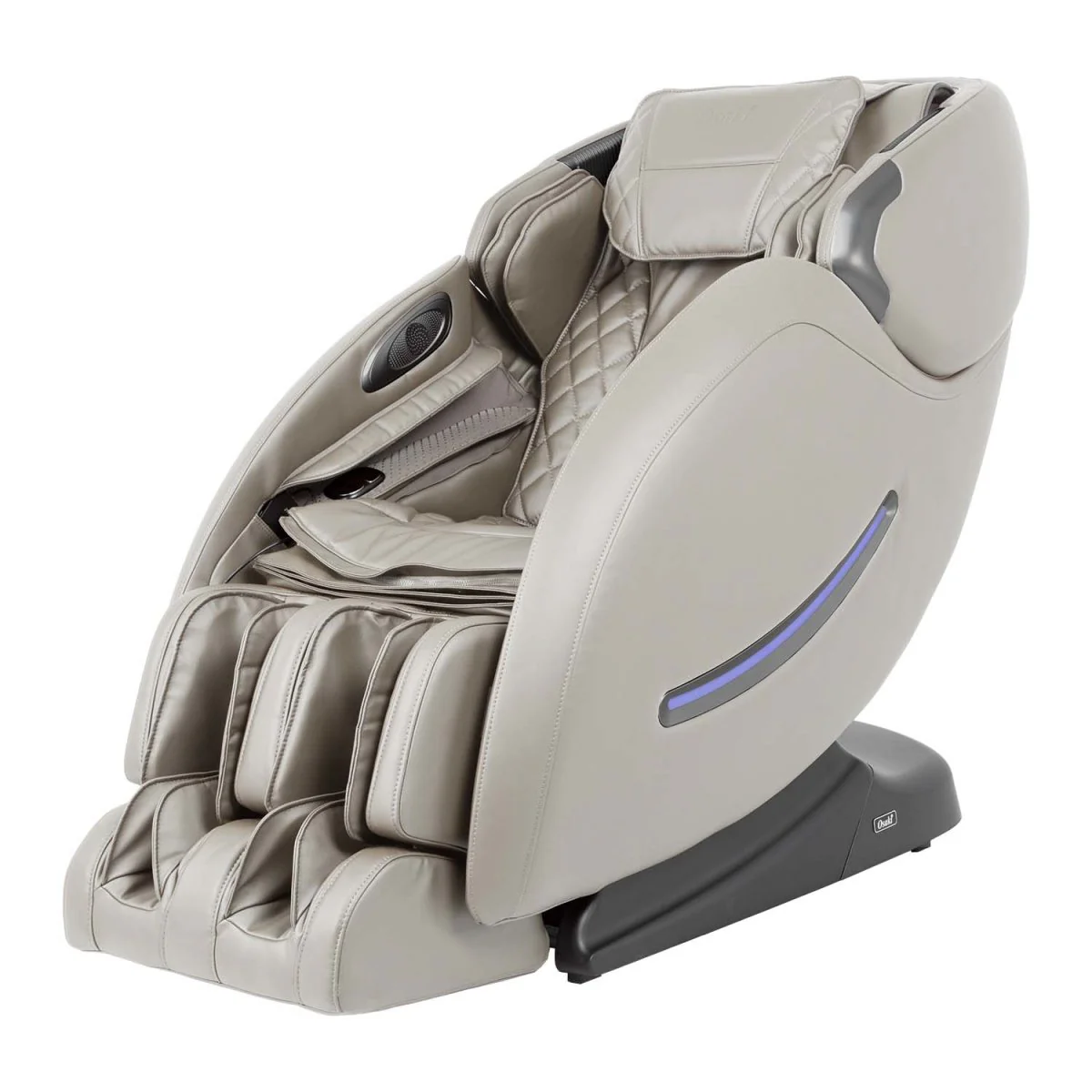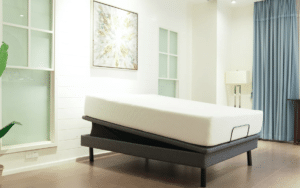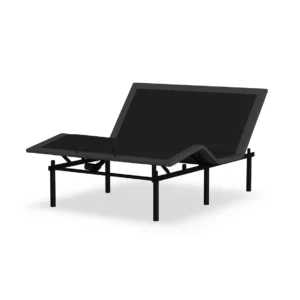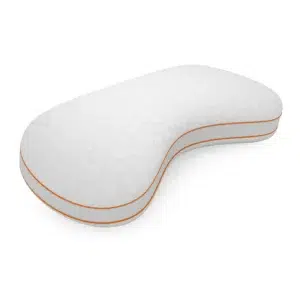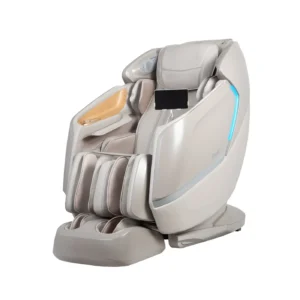Japanese Massage: Top 5 Powerful Benefits in 2025
Why Japanese Massage is Important
Japanese massage is a well-regarded traditional therapy that combines techniques to promote both physical and mental well-being. If you’re considering Japanese massage, here’s a quick look at its primary benefits:
- Stress reduction
- Muscle tension relief
- Improved circulation
- Improved mental clarity
- Overall well-being
Japanese massage originated from traditional Chinese medicine and has been practiced for centuries in Japan. Techniques like Shiatsu, Kobido, and Anma not only aim to heal but also hold cultural significance by preserving ancient therapeutic methods.
My name is Ben Trapskin. With a deep interest in holistic health practices and extensive experience reviewing various therapies, I’m here to guide you through the benefits of Japanese massage. Stick around to explore how this age-old therapy can help you.

Japanese massage terms at a glance:
- Are massage chairs good for arthitis?
- Medical Breakthrough Massage Chairs
- What do doctors say about massage chairs
Understanding Japanese Massage
The History of Japanese Massage
Japanese massage, a blend of ancient techniques and cultural wisdom, has deep roots in traditional Chinese medicine. The foundation of Japanese massage is Anma, which means “pressing and rubbing.” This method dates back thousands of years and was likely influenced by Chinese and Indian practices.
In the 17th century, a blind acupuncturist named Sugiyama Waichi played a crucial role in popularizing Anma. He established schools for the blind where massage was taught as a viable profession, making it accessible and professionalized.
Connection between Anma and Shiatsu
Anma and Shiatsu share a common foundation but have distinct differences. Anma focuses on rubbing, pressing, and stretching muscles to relieve tension and improve circulation. It uses hands, thumbs, fingers, elbows, and feet to manipulate specific meridian points on the body.
Shiatsu, on the other hand, evolved from Anma and places greater emphasis on pressure points and energy pathways along the body’s meridians. It incorporates techniques like finger pressure, palm pressure, and even elbow pressure. Shiatsu aims to promote energy flow and balance, enhancing both physical and mental well-being.
Practitioners of Shiatsu use a holistic approach, incorporating stretching, rocking motions, and rhythmic compression. This method not only relieves physical stress but also fosters emotional harmony and relaxation.
Kobido
Kobido is another specialized form of Japanese massage, primarily focusing on facial aesthetics. Known for enhancing skin elasticity and firmness, Kobido uses gentle finger pressure and stretching techniques along energy pathways. It stimulates muscles and the lymphatic system, promoting drainage and reducing puffiness.
Kobido’s benefits are not just skin-deep. By targeting facial muscles and energy channels, it contributes to overall relaxation and well-being.
The Evolution of Anma and Shiatsu
While Anma and Shiatsu share foundational techniques, Shiatsu has evolved into a distinct form of therapy recognized for its diagnostic and therapeutic applications. This evolution highlights the adaptability and enduring relevance of Japanese massage techniques.
Whether you’re seeking muscle tension relief or mental clarity, Japanese massage offers a range of benefits rooted in centuries-old practices. Understanding the history and connection between Anma and Shiatsu can deepen your appreciation for these therapeutic methods.
Next, we’ll dive into the different types of Japanese massage, including Shiatsu, Kobido, and Anma, to explore their unique techniques and benefits.
Different Types of Japanese Massage
Japanese massage offers a variety of techniques, each with unique benefits and approaches. Let’s explore five distinct types: Shiatsu, Kobido, Anma, Seitai, and Reiki.
Shiatsu
Shiatsu means “finger pressure” and is a popular Japanese massage technique. It originated from Anma and incorporates the fundamentals of traditional Chinese medicine, focusing on meridians and energy flow.
Practitioners use their fingers, palms, elbows, and even knees to apply pressure along the body’s meridians. This method aims to promote energy flow, relieve stress, and improve overall well-being.
Shiatsu was modernized in the early 20th century by Tokujiro Namikoshi. In 1954, it was officially recognized by the Japanese Ministry of Health as a legitimate form of therapy. The European Union also recognized it in 1997 as one of the eight most effective non-traditional medicines.
Benefits of Shiatsu:
- Stress reduction
- Muscle tension relief
- Improved mental clarity
- Stimulation of the immune system

Kobido
Kobido is a specialized Japanese facial massage known for its aesthetic benefits. It focuses on enhancing skin elasticity, firmness, and overall facial appearance.
Practitioners use gentle finger pressure and stretching techniques along energy pathways. This stimulates facial muscles and the lymphatic system, promoting drainage and reducing puffiness.
Benefits of Kobido:
- Improved skin elasticity and firmness
- Brighter complexion
- Reduced puffiness and fine lines
- Overall relaxation and well-being
Anma
Anma is the oldest form of Japanese massage, rooted in principles of Traditional Chinese Medicine. It involves rubbing, pressing, and stretching muscles to relieve tension and improve circulation.
Practitioners use hands, thumbs, fingers, elbows, and feet to apply pressure to specific meridian points on the body.
Benefits of Anma:
- Muscle tension relief
- Improved circulation
- Stress reduction
- Improved relaxation
Seitai
Seitai focuses on spinal alignment and joint mobilization. This technique aims to improve overall well-being by ensuring the body is properly aligned.
Practitioners use gentle manipulations to adjust the spine and joints, promoting better posture and reducing pain.
Benefits of Seitai:
- Improved spinal alignment
- Joint pain relief
- Improved overall well-being
- Better posture
Reiki
Reiki is a form of energy healing that uses a gentle touch to promote mental and emotional harmony. Practitioners believe that by channeling energy into the body, they can help balance the body’s energy fields.
Reiki sessions typically involve the practitioner placing their hands lightly on or just above the body to transfer healing energy.
Benefits of Reiki:
- Mental and emotional balance
- Stress reduction
- Improved relaxation
- Improved overall well-being
These diverse techniques highlight the rich tradition and versatility of Japanese massage. Next, we’ll dig into the specific techniques involved in Japanese massage, including rocking, pressure, elongation, and rotation.
Techniques Involved in Japanese Massage
Japanese massage techniques are designed to promote relaxation, improve circulation, and restore balance within the body. Let’s explore four key techniques: rocking, pressure, elongation, and rotation.
Rocking
Rocking involves rhythmic, gentle movements that mimic the soothing motion of waves.
Practitioners use rocking to release muscle tension and improve circulation. This technique helps align the mind and body, cultivating a profound sense of tranquility.
Rocking is particularly effective in promoting relaxation and helping the body enter a state of deep rest. The rhythmic movements can ease stress and anxiety, making it a favored technique in various Japanese massages.
Pressure
Pressure is a cornerstone of Japanese massage. Practitioners apply firm but gentle pressure using their palms, thumbs, and fingers. This targeted pressure stimulates specific points on the body, known as acupressure points.
By pressing these points, the massage can:
- Release muscle tension
- Promote blood circulation
- Alleviate pain and discomfort
The intensity of the pressure is carefully controlled to achieve deep relaxation and overall well-being. This technique is widely used in Shiatsu and Anma massages.
Elongation
Elongation involves stretching muscles to improve flexibility and reduce tension.
Practitioners use firm pressure and rhythmic motions to gently stretch the muscles. This technique improves blood flow, reduces muscle tightness, and increases overall flexibility.
Elongation is particularly beneficial for those suffering from chronic pain or stiffness. By releasing muscle tightness, it promotes relaxation and improves the range of motion.
Rotation
Rotation employs circular motions to alleviate muscle stiffness and improve circulation.
Practitioners use their hands to rotate joints and muscles in circular motions. This helps to:
- Release tension
- Improve flexibility
- Improve overall physical health
Rotational movements are integral to techniques like Shiatsu and Anma, targeting pressure points for holistic well-being. These motions thoroughly address tension, enabling a comprehensive approach to relaxation.
By incorporating these techniques, Japanese massage offers a multifaceted approach to healing and relaxation. Each method works in harmony to restore balance and promote overall well-being.
Benefits of Japanese Massage
Japanese massage offers a wide range of benefits for both the body and mind. Let’s dig into how these ancient techniques can improve your physical and emotional well-being.
Physical Benefits
1. Muscle Relaxation
Japanese massage techniques like Shiatsu and Anma are highly effective in relaxing tight muscles. The controlled pressure and rhythmic movements help to release muscle tension, making your body feel more at ease.
2. Pain Alleviation
By targeting specific acupressure points, Japanese massage can help alleviate pain. This is particularly beneficial for individuals suffering from chronic conditions like arthritis or lower back pain. The deep pressure applied during a Shiatsu session can significantly reduce discomfort.
3. Improved Circulation
Techniques such as elongation and rotation improve blood flow throughout the body. Better circulation means more oxygen and nutrients are delivered to tissues, promoting faster healing and overall health improvement.
4. Flexibility Improvement
Stretching techniques used in Japanese massage can improve your range of motion. Elongation helps stretch muscles and ligaments, which can be particularly beneficial for athletes or those with sedentary lifestyles.
Mental and Emotional Benefits
1. Stress Relief
One of the most sought-after benefits of Japanese massage is stress reduction. Techniques like rocking and pressure help to calm the nervous system, making you feel more relaxed and less anxious.
2. Anxiety Reduction
The rhythmic and soothing motions used in Japanese massage can help reduce anxiety levels. The focus on acupressure points releases endorphins, which are natural mood lifters.
3. Emotional Harmony
Japanese massage aims to balance the body’s energy pathways, known as meridians. This balance can lead to emotional harmony, making you feel more centered and at peace.
4. Mental Clarity
By promoting relaxation and reducing stress, Japanese massage can also improve mental clarity. The calming effects extend to the mind, helping you think more clearly and focus better.
Overall Well-Being
1. Improved Energy Levels
Regular sessions of Japanese massage can boost your overall energy levels. By improving circulation and reducing muscle tension, your body functions more efficiently, leaving you feeling revitalized.
2. Better Sleep
The relaxation achieved through Japanese massage can lead to better sleep quality. Techniques like rocking and pressure help to calm the mind, making it easier to fall asleep and stay asleep.
3. Immune System Boost
Improved circulation and reduced stress levels can also have a positive impact on your immune system. A balanced body is better equipped to fend off illnesses.
In summary, Japanese massage offers a holistic approach to well-being, addressing both physical and emotional needs. Whether you’re looking to relieve muscle tension or achieve emotional balance, these ancient techniques provide a comprehensive solution.
Leading into the next section…
Potential Risks and Side Effects of Japanese Massage
While Japanese massage offers numerous benefits, it’s crucial to be aware of potential risks and side effects to ensure a safe and positive experience.
Minor Discomfort
During techniques like Shiatsu, you might experience slight discomfort. This is usually due to the deep pressure applied to specific points. Communicate with your therapist if the pressure feels too intense. Adjustments can be made to improve your comfort.
Chronic Conditions
If you have chronic conditions such as arthritis, fibromyalgia, or lower back pain, consult your healthcare provider before starting Japanese massage therapy. While these massages can offer relief, they might not be suitable for every individual.
Consultation with Healthcare Provider
Always consult with a healthcare professional before undergoing any massage therapy, especially if you have specific health conditions. This ensures that the therapy complements your existing treatment plan.
Specific Health Conditions
Certain health conditions require extra caution:
- Unhealed Wounds: Avoid massage on or near unhealed wounds to prevent further injury.
- Tumors: Consult a healthcare provider if you have tumors, as massage might not be advisable.
- Abdominal Hernias: Massage could exacerbate this condition, so medical advice is essential.
- Recent Fractures: Avoid massage on recently fractured areas until fully healed.
- Infectious Skin Diseases: Massage can spread infections, so it’s best to wait until the condition clears.
Pregnancy
Pregnant women should consult their physician before undergoing any massage therapy. While some techniques can be beneficial, others might pose risks. Specialized prenatal massages are often recommended.
Osteoporosis
Individuals with osteoporosis should be cautious. The deep pressure used in some Japanese massage techniques might not be suitable and could lead to fractures. Always inform your therapist about your condition.
Recent Injuries and Surgeries
Avoid massage therapy immediately after injuries or surgeries. Wait until your healthcare provider gives the green light. Massage could interfere with the healing process if done too soon.
Listening to Your Body
Always listen to your body during a massage session. If you experience pain or discomfort, inform your therapist immediately. Adjustments can be made to ensure a safer and more enjoyable experience.
Post-Massage Care
After a session, drink plenty of water and rest. This helps your body recover and improves the benefits of the massage.
In summary, while Japanese massage offers significant benefits, take precautions to avoid potential risks. Always consult with a healthcare provider to ensure that massage therapy is appropriate for your specific health situation.
Leading into the next section…
Frequently Asked Questions about Japanese Massage
What does Japanese massage include?
Japanese massage encompasses a variety of techniques aimed at promoting relaxation and healing. Common elements include:
- Kneading: This involves gently squeezing and rolling the muscles to improve circulation and relieve tension.
- Tapping: Light, rhythmic tapping helps stimulate the muscles and increase blood flow.
- Pulling: Gentle pulling of limbs can help stretch muscles and joints.
- Pressure: Firm but gentle pressure is applied using the palms, thumbs, and fingers, targeting specific acupressure points.
These techniques can be applied to various parts of the body, including the legs, back, arms, and neck. Each method aims to balance the body’s energy, known as Chi, and improve overall well-being.
What is Japanese massage for pleasure?
Japanese massage techniques not only address physical ailments but also aim to balance Chi energy within the body. This energy flows through pathways called meridians. By applying pressure to these meridians, the massage helps release tension and restore balance, leading to a pleasurable and relaxing experience.
For instance, Shiatsu focuses on these energy pathways, using finger pressure to stimulate Chi flow. This can result in a sense of deep relaxation and emotional harmony, making it a pleasurable experience for many.
What do you wear to a Japanese massage?
For a Japanese massage session, it’s best to wear comfortable, loose-fitting clothing. Options include:
- Loose sweatpants: These allow for easy movement and access to various body parts.
- Yoga pants: Stretchy and comfortable, making them ideal for massage sessions.
- Comfortable clothing: Anything that doesn’t restrict movement and allows the therapist to work effectively.
Typically, you remain fully clothed during a Japanese massage, especially for techniques like Shiatsu. Always check with your therapist beforehand to ensure you’re appropriately dressed for the session.
Conclusion
Japanese massage offers a unique blend of therapeutic and holistic benefits. From Shiatsu to Kobido, these ancient techniques aim to balance the body’s energy, alleviate muscle tension, and improve overall well-being.
At Yawnder, we believe in the power of holistic treatments to improve your life. Whether you’re looking to reduce stress, improve flexibility, or simply enjoy a moment of relaxation, Japanese massage can be a valuable addition to your wellness routine.
Therapeutic Benefits
The therapeutic benefits of Japanese massage are well-documented. Techniques like Shiatsu and Anma can:
- Reduce Muscle Tension: By applying pressure to key points, these massages help relax tight muscles.
- Improve Circulation: Techniques like kneading and tapping stimulate blood flow, enhancing oxygen and nutrient delivery to tissues.
- Promote Mental Clarity: The relaxation achieved through Japanese massage can help clear the mind, reducing stress and anxiety.
Holistic Treatment
Japanese massage is not just about physical relief; it’s a holistic treatment that addresses the mind, body, and spirit. By balancing the body’s energy pathways, known as meridians, these massages can help you achieve emotional harmony and mental clarity. This holistic approach makes Japanese massage a comprehensive therapy for overall wellness.
Consultation with Healthcare Provider
While Japanese massage offers numerous benefits, consult your healthcare provider before starting any new treatment, especially if you have specific health conditions. This ensures that the therapy is safe and suitable for your individual needs.
Remember: Always listen to your body and communicate with your therapist to ensure a positive experience.
For more information on holistic treatments and therapeutic options, visit our Natural Mattresses page.
Japanese massage can be a transformative experience, offering both physical and emotional benefits. If you’re looking to explore this ancient practice, consult with your healthcare provider and find a certified therapist to guide you through the journey. At Yawnder, we’re here to support you in achieving a balanced and healthy life.





